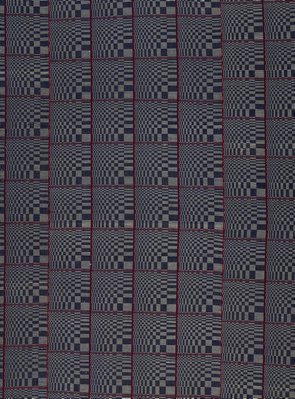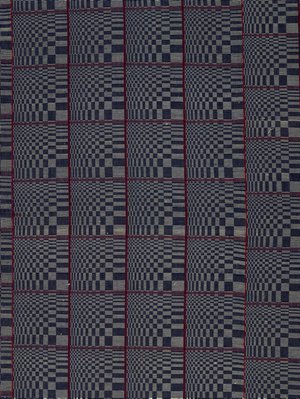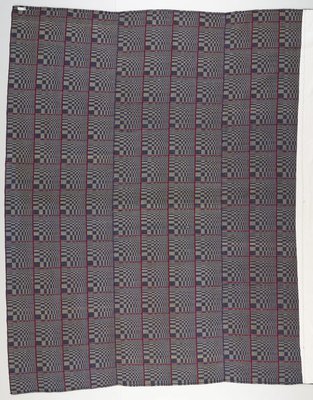



-
Details
- Other Title
- Blanket ('bayaong')
- Place where the work was made
-
Abra
→
Central Cordillera
→
Luzon
→
Philippines
- Cultural origin
- Itneg
- Date
- 20th century
- Media category
- Textile
- Materials used
- cotton; plain weave
- Dimensions
- 162.0 x 195.5 cm
- Credit
- Gift of Dr John Yu and Dr George Soutter 2005
- Location
- South Building, ground level, Asian Lantern galleries
- Accession number
- 180.2005
- Copyright
- Artist information
-
Itneg
Works in the collection
- Share
-
-
About
The mountainous region of Central Cordillera in northern Luzon is home to a large number of indigenous communities. Their fierce self-determination and geographic isolation provided relative protection from the cultural influences of Spanish colonisation. However, their art did not remain unchanged. Communities retained forms which were useful and meaningful, abandoned others and created new forms to meet new purposes – a tradition that has continued into 21st century.
In Central Cordillera art is part of everyday life and is intrinsically linked to community and spiritual wellbeing. Many villages are built around a central stone platform where social and spiritual rites are performed. These include the worship of deities and ancestors and the consecration of sculptural figures.
The carving of ancestral and religious figures, while today most prevalent among Ifugao men, was previously a practise shared by all communities of the Central Cordilleran mountain range. Textiles, on the other hand, are woven exclusively by women using backstrap looms. There has been a long and active trade in locally woven products, so many communities share techniques and an appreciation for similar motifs and colour schemes.
Across the Cordillera, textiles play an important role in all aspects of life, from birth to death. Textiles like this one may have been used on a daily basis as a blanket, cloak and even a baby carrier, but also served more symbolic purposes when hung to mark the birth of a child or the funeral rites of the dead.
This large blanket is made from three strips of cloth, woven on a backstrap loom and sewn together. The highly optical patterning is achieved by a continuous supplementary weft technique known as pinilian. The pattern itself is known as sangbitwin, meaning ‘star pattern’, and is imbued with cosmological significance. The blue colouring is derived from locally cultivated indigo plants and is associated with death and the worship of ancestors
-
Exhibition history
Shown in 3 exhibitions
Conversations through the Asian collections, Art Gallery of New South Wales, Sydney, 25 Oct 2014–13 Mar 2016
Passion and procession: art of the Philippines, Art Gallery of New South Wales, Sydney, 24 Jun 2017–07 Jan 2018
Correspondence, Art Gallery of New South Wales, Sydney, 10 Sep 2022–2024
-
Provenance
John Yu, 1970s-2005, Sydney/New South Wales/Australia, purchased mid-1970s from an antique shop in Mabini st., Manila, Philippines. Donated to the Art Gallery of New South Wales, Sydney, June 2005.

